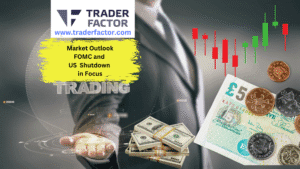As we head into the week, there are several significant events and economic indicators that traders and investors should keep an eye on.
The focus will be on the Eurozone Purchasing Managers’ Index (PMI) data, the Federal Open Market Committee (FOMC) meeting, and potential rate hikes by both the Federal Reserve (Fed) and the European Central Bank (ECB).
These events have the potential to shape market sentiment, influence currency movements, and provide valuable insights into the global economic outlook.
Table of Contents
ToggleEUR/USD Struggles to Break 1.1100 Mark Amidst US Data
The EUR/USD pair remains under pressure, unable to surpass the 1.1100 level on Monday. Despite the US private sector showing signs of expansion in July, albeit at a slower pace than in June, the US Dollar maintains its strength.

EUR/USD breaks key Fibonacci retracement, signaling potential downside momentum
With the pair losing ground for a fifth straight day, it suggests a bearish bias. However, EUR/USD remains above its moving averages, including the strong support of the 20 SMA at 1.1040. Momentum remains positive, although the RSI indicator is trending downwards.
In the short term, the pair reached oversold levels, but technical indicators show limited bullish momentum. The 4-hour chart confirms bearish sentiment with the pair trading below the 20 SMA, while the 100 SMA aligns with the 50% retracement level at 1.1050.
Key support levels to watch are 1.1040, 1.1005, and 1.0960, while resistance levels are set at 1.1110, 1.1155, and 1.1190.
US Dollar Gains Ground Against Rivals as Euro Struggles with Economic Downturn
The US Dollar had a strong start to the week, outperforming other major currencies. The Euro, in particular, took a hit due to a worsening economic situation in Europe.
S&P Global’s preliminary estimates for July’s EU’s PMIs were disappointing, missing market expectations.
Germany saw its Manufacturing PMI drop to the lowest level in three years, while the Services PMI hit a five-month low. This resulted in the German economy entering a contraction in July, according to the official report. The Composite PMI Output Index for Germany also hit a low for 2023.
Furthermore, the Eurozone experienced the fastest decline in business output in eight months in July, according to S&P Global’s survey. The manufacturing index and services index both fell, leaving the Composite PMI at a low level.
In the midst of a busy week of important events, investors are cautious and hesitant about committing to a specific direction, leading to a recovery in the EUR/USD exchange rate towards the 1.1090 price zone.
The Week Ahead
Get ready for a big announcement from the US Federal Reserve and the European Central Bank!
Both central banks are expected to raise interest rates by 25 basis points, but what happens next could have a major impact on the EUR/USD trend. Plus, the US is set to release its Q2 GDP estimate and the June PCE Price Index. Stay tuned for the latest updates.
Also, keep an eye out for the preliminary estimates of the July US PMIs from S&P Global. Manufacturing output is predicted to improve slightly, while services activity may shrink.
Don’t miss out on these important indicators of economic growth. Stay informed with TraderFactor’s updated economic Calendar.
Get ready for an action-packed week in the stock market! Buckle up, because this week is going to be a rollercoaster ride for investors.
In the midst of all this, the S&P 500 futures are already showing positive signs in early trading on Monday. With the futures market pointing upwards, it’s clear that there’s plenty of optimism in the air.
Earnings Reports Expected This Week
The S&P 500 is set to experience some wild ups and downs as an exciting mix of events unfolds. Earnings season is in full swing, with numerous major companies reporting their second-quarter results.
- Domino’s Pizza
- Microsoft
- Visa
- Meta Platforms
- Coca-Cola
- Mastercard
- McDonald’s
- Exxon Mobil
- Procter & Gamble
Understanding FOMC Meetings and Their Impact on the Dollar: A Guide for Traders
FOMC meetings play a crucial role in shaping monetary policy and have a significant impact on financial markets, particularly the value of the US dollar. As a trader, it is important to understand the dynamics of these meetings and how they can influence currency movements.
What Are FOMC Meetings
FOMC Meetings and the Dollar FOMC, or the Federal Open Market Committee, consists of members of the Federal Reserve who gather periodically to make decisions regarding monetary policy in the United States. These meetings are closely watched by traders and investors around the world due to their potential to shape market sentiment.
FOMC decisions can have a profound impact on the value of the US dollar. One key aspect is interest rate decisions. When the FOMC raises interest rates, it typically strengthens the dollar as higher rates make holding US assets more attractive to foreign investors. Conversely, a decrease in interest rates can weaken the dollar.
Another influential factor is forward guidance, which refers to the FOMC’s communication about future policy actions. If the committee signals its intention to raise rates in the future, it can contribute to a stronger dollar. On the other hand, dovish or accommodative guidance may lead to a weaker dollar.
Quantitative easing measures implemented by the FOMC can also impact the dollar. When the committee engages in large-scale asset purchases, it increases the money supply, which can potentially weaken the dollar’s value relative to other currencies.
How Traders Should Prepare for FOMC Meetings
Successful trading during FOMC meetings requires careful preparation and analysis. Here are some steps traders can take to be well-prepared:
- Keep track of the dates and times of FOMC meetings to ensure you are aware of any potential market-moving events.
- Pay close attention to key economic data releases leading up to the meeting, such as GDP figures, inflation reports, and employment data. This will help you gauge the overall economic outlook and market sentiment.
- Reviewing past FOMC statements and meeting minutes can provide insights into the committee’s thinking and give you an idea of what to expect in terms of policy decisions and guidance.
- Anticipate how the market is likely to respond to different scenarios, such as a rate hike, rate cut, or changes in forward guidance. This will help you develop trading strategies that align with your expectations.
- Prepare multiple trading strategies that can be implemented based on the outcome of the FOMC meeting. This flexibility will allow you to adapt to changing market conditions quickly.
Risk Management During FOMC Meetings
Trading during FOMC meetings can be volatile, and it is important to manage risk effectively. Here are some risk management considerations:
- Determine your risk tolerance and set stop-loss levels to limit potential losses in case of unexpected market moves.
- Avoid overexposure to the market by appropriately sizing your positions based on your account size and risk appetite.
- FOMC meetings can cause significant market volatility, leading to rapid price movements. Be mentally prepared for this and adjust your trading strategy accordingly.
- Stay flexible and adapt your trading approach as new information becomes available during the meeting. Be ready to exit positions or adjust stop-loss levels if needed.
FOMC meetings are pivotal events for traders and investors, with the potential to influence the value of the US dollar and impact financial markets. By understanding the dynamics of these meetings, staying informed, and implementing effective risk management strategies, traders can navigate these events with confidence.
Remember to conduct thorough research, develop a solid trading plan, and be prepared for market volatility. With the right preparation and approach, FOMC meetings can present opportunities for traders to profit from currency movements and make informed trading decisions.
Disclaimer:
All information has been prepared by TraderFactor or partners. The information does not contain a record of TraderFactor or partner’s prices or an offer of or solicitation for a transaction in any financial instrument. No representation or warranty is given as to the accuracy or completeness of this information. Any material provided does not have regard to the specific investment objective and financial situation of any person who may read it. Past performance is not a reliable indicator of future performance.

















